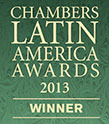In a case being described as the leading opinion on the rights of visual artists under the Visual Artists Rights Act of 1990, 17 U.S.C. § 106A (“VARA”), on October 5, 2020, the Supreme Court of the United States denied a petition for a writ of certiorari in Castillo v. G&M Realty L.P., a case involving a New York City developer’s destruction of 45 murals at a Queens warehouse, known as 5Pointz. With the decision, the lower court’s award of $6.7 million in damages under VARA stands, after being affirmed by the US Court of Appeals for the Second Circuit.
In 2002, Gerald Wolkoff, real estate developer and owner of 5Pointz, hired artists to install artworks in the abandoned complex. The abandoned warehouses flourished as a mecca for street artists, under the leadership of Jonathan Cohen, a distinguished aerosol artist, who became the site’s curator. According to court documents, 5Pointz was home to more than 10,650 works of art during its lifespan. Despite the buoying art scene, Mr. Wolkoff had plans to further develop the site into luxury apartments. As a result, Cohen and other artists decided to sue under VARA in order to prevent the destruction of the site. After obtaining a temporary restraining order, the plaintiffs applied for a preliminary injunction, which was denied on November 12, 2013. That same night, Mr. Wolkoff began the demolition of the site, painting over numerous works of art.
After a protracted legal battle, a federal court judge sided with an advisory jury and held that Mr. Wolkoff had willfully violated VARA by destroying 45 works of art. Moreover, the federal court judge held that plaintiffs successfully demonstrated their works of art attained the recognized stature necessary under VARA, even though they do not qualify as permanent works of art.
The court concluded that the decision to award the maximum amount of statutory damages under VARA did not represent an abuse of discretion. In doing so, the court also examined six factors taken from copyright law, which are used to calculate statutory damages:
- The infringer’s state of mind;
- The expenses saved, and profits earned, by the infringer;
- The revenue lost by the copyright holder;
- The deterrent effect on the infringer and third parties;
- The infringer’s cooperation in providing evidence concerning the value of the infringing material; and
- The conduct and attitude of the parties
Reviewing these factors, the lower court judge established that Mr. Wolkoff rings the bell on each relevant factor. According to the judge, Mr. Wolkoff acted out of pure pique and revenge towards the artists who had sued him.
It is important to note that in Puerto Rico artists are protected both by VARA and by the Puerto Rico Moral Rights Act.
The content of this McV Alert has been prepared for information purposes only. It is not intended as, and does not constitute, either legal advice or solicitation of any prospective client. An attorney-client relationship with McConnell Valdés LLC cannot be formed by reading or responding to this McV Alert. Such a relationship may be formed only by express agreement with McConnell Valdés LLC.







